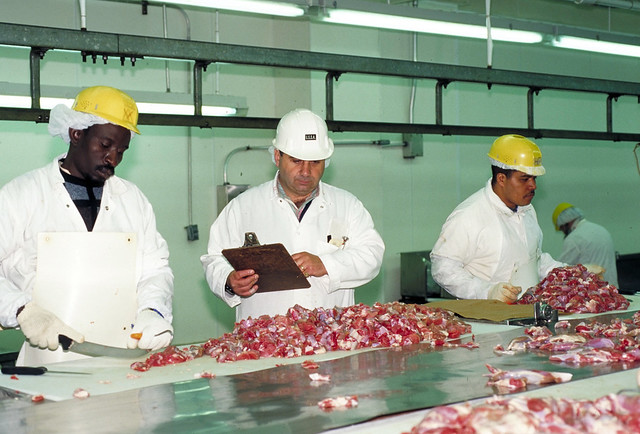
Labour trend: Who is processing your food?
Rehana Begg

Labour market information confirms why attracting and retaining workers in the food and beverage manufacturing sector is a challenge

PHOTO: U.S. Department of Agricultures (USDA) Food Safety Inspection Service (FSIS)/via Flickr
Labour shortages are having critical impacts of lost sales for food and beverage businesses along with their value producers. And without addressing barriers, the food processing industry will not keep pace with the growth created by Canada’s food supply chain.
Results from a 2019 labour market information study by Food Processing Skills Canada (FPSC) quantifies the gap in employment for the food and beverage manufacturing sector between 2018 and 2025.
The study, Who is Processing Your Food? Food & Beverage Labour Market Information, is exposing a significant workforce challenge for businesses, said Kevin Elder, a project manager who is leading the labour market information study for FPSC.
The new research is based on the 2018 Agri-Food Economic Strategy Table report that challenges industry to grow at 3.5% per year to achieve export sales of $85 billion in 2025, said Elder.
According to the 2018 report, the food and beverage processing industry will need to hire almost 65,000 new employees – 21,000 for industry growth and 44,000 for replacing workers due to retirement – if the industry intends to meet the ambitious target.
These numbers present significant hurdles for food and beverage processors, as they are hard-pressed to find qualified employees to meet their facilities’ requirements, said Elder.
By stratifying populations across geographies, his research has uncovered that the growing rural-urban divide is a marker that explains why Canadians aren’t filling roles in the agri-food sector.
Another factor is the misperception that machines can replace people. Through qualitative interviews with industry, Elder found that even after processors purchased automated machinery that are capable of doing the work of an individual, the facility would retain the employee, as his services would be needed to fulfill tasks elsewhere within the facility.
While the numbers highlight a range of human-resource challenges for Canadian food processing sectors, they also help to quantify the skills deficit, identify best practices and provide a mechanism for building awareness, said Elder.
The Agri-Food Economic Strategy Table report notes that one way to address the immediate labour shortages is to harness Canada’s immigration and temporary foreign worker programs. By modernizing the immigration process, the industry can access the global labour force across all skill levels.
As an example, the red meat sector is facing a chronic shortage of butchers. The subsector creates more than 288,000 jobs, and there are currently more than 1,700 vacancies to fill. Meanwhile, there are 900 butchers looking for permanent residency, according to the Canadian Meat Council. If one consider that more than 90% of temporary foreign workers who are allowed to stay remain working in the rural meat packing plants, a solution becomes evident, notes CMC.
In March, the Government of Canada announced in the federal budget a three-year Agri-Food Immigration Pilot to bring in full-time, non-seasonal agricultural workers with a pathway to permanent residency, and to help fill jobs in meat-packing facilities.
If the findings of the skills gap are a trigger for employers, the pilot program, along with resources offered by the FPSC should provide veritable upskilling resources, said Elder.
FPSC flagship programs include: Succeeding at Work (skills development), Food Skills Library (an online training tool), and the Food Processors’ Institute (provides training) and the Food Safety Management Training Program for Newcomers.